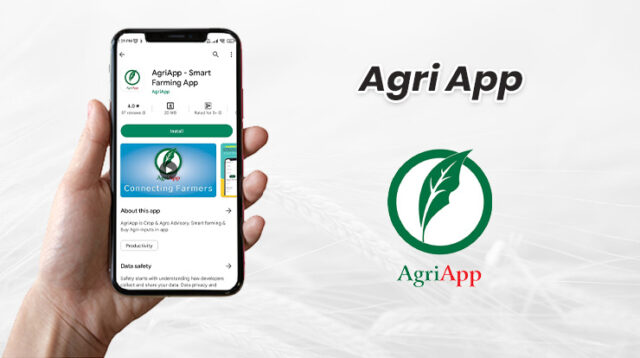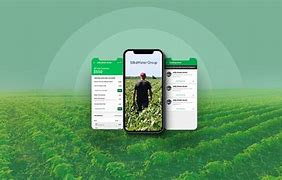Building a mobile app for local farmers in Agra can significantly enhance their productivity, access to markets, and overall quality of life. Given Agra’s agricultural heritage, a well-designed app can serve as a vital tool for connecting farmers with resources, information, and buyers. Here’s a step-by-step guide on how to build an effective mobile app for Agra’s local farmers.

Table of Contents
Toggle1. Identify the Purpose and Features
Before developing the app, it’s crucial to define its primary purpose and the key features that will best serve local farmers.
Potential Purposes:
- Market Access: Facilitate direct sales to consumers and businesses.
- Resource Management: Provide information on farming techniques, weather forecasts, and pest control.
- Community Engagement: Create a platform for farmers to share experiences and support each other.
Essential Features:
- Marketplace: Allow farmers to list and sell their produce directly to consumers and local businesses.
- Agricultural Resources: Offer access to farming tips, best practices, and agricultural news.
- Weather Updates: Provide localized weather forecasts to help farmers plan their activities.
- Community Forum: Create a space for farmers to ask questions, share knowledge, and connect with one another.
- Payment Integration: Enable secure transactions between buyers and sellers.
2. Design an Intuitive User Interface
A user-friendly interface is essential for ensuring that farmers, many of whom may not be tech-savvy, can navigate the app easily.
Design Considerations:
- Simple Navigation: Use clear categories and icons to guide users through the app.
- Local Language Support: Offer options for Hindi and other local languages to ensure accessibility.
- Visual Appeal: Incorporate images of produce and farming activities to create an engaging experience.
3. Develop a Robust Backend System
A reliable backend is crucial for managing data, transactions, and user interactions effectively.
Backend Essentials:
- Database Management: Set up a database to store user profiles, product listings, and transaction records.
- Real-Time Updates: Implement features for real-time updates on market prices, weather conditions, and new resources.
- Security Protocols: Ensure robust security measures are in place to protect user data and transaction information.
4. Incorporate Educational Resources
Providing educational content can empower farmers with the knowledge they need to improve their practices and productivity.
Educational Features:
- Articles and Videos: Create a library of resources covering topics like sustainable farming, crop rotation, and pest management.
- Webinars and Workshops: Organize online sessions with agricultural experts to share insights and best practices.
5. Integrate a Payment System
A seamless payment system is essential for facilitating transactions between farmers and buyers.
Payment Solutions:
- Digital Wallets: Incorporate popular payment methods like UPI, mobile wallets, and credit/debit cards to cater to a diverse user base.
- Cash on Delivery: Provide this traditional option for users who may prefer it.
6. Build a Community Engagement Platform
Creating a community platform can foster collaboration and support among farmers.
Community Features:
- Discussion Boards: Allow users to post questions, share experiences, and offer advice to fellow farmers.
- Local Events Calendar: Highlight local agricultural events, markets, and fairs to encourage participation.
7. Implement Feedback and Support Mechanisms
Gathering feedback from users can help improve the app and its offerings continually.
Support Features:
- In-App Feedback Form: Enable users to submit suggestions or report issues easily.
- Customer Support: Provide a helpline or chat feature for immediate assistance.
8. Marketing and Promotion
Once the app is developed, a solid marketing strategy is essential to encourage downloads and user engagement.
Marketing Strategies:
- Awareness Campaigns: Utilize local agricultural fairs and community events to promote the app.
- Collaborations with Local Organizations: Partner with agricultural cooperatives and NGOs to reach more farmers.
- Social Media Promotion: Leverage social media platforms to share success stories and highlight the app’s benefits.
9. Monitor and Improve
After launching the app, continuously monitor user engagement and gather feedback to identify areas for improvement.
Improvement Strategies:
- Analytics Tools: Use analytics to track user behavior, popular features, and areas needing enhancement.
- Regular Updates: Keep the app updated with new features, educational content, and improvements based on user feedback.
Conclusion
Building a mobile app for Agra’s local farmers can have a profound impact on their productivity, income, and community engagement. By focusing on user-friendly design, essential features, and continuous improvement, you can create a valuable resource that empowers farmers and strengthens the agricultural community in Agra. As technology continues to play a crucial role in agriculture, a dedicated app can help bridge the gap between traditional farming practices and modern solutions, ultimately contributing to the sustainability and growth of the sector.


No responses yet